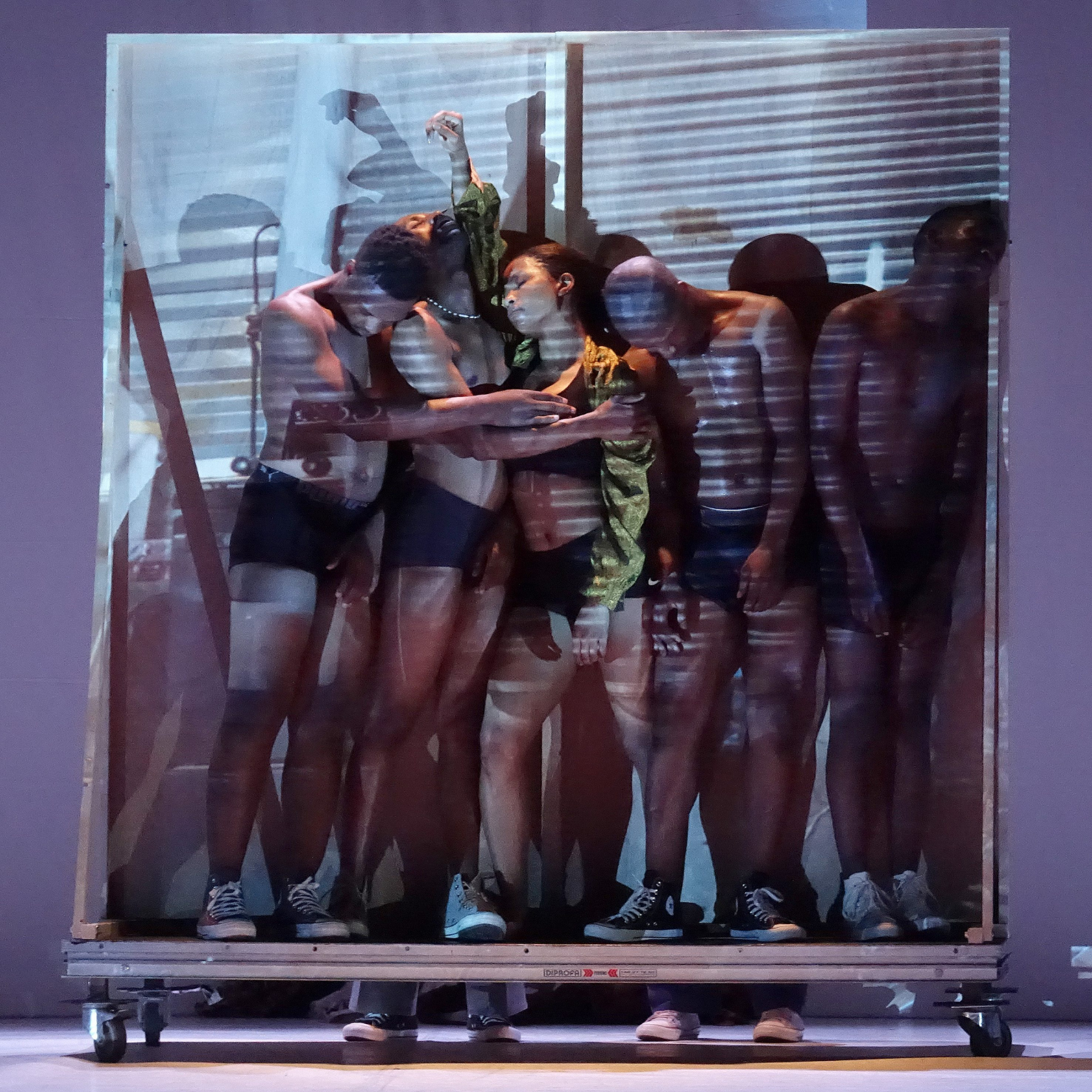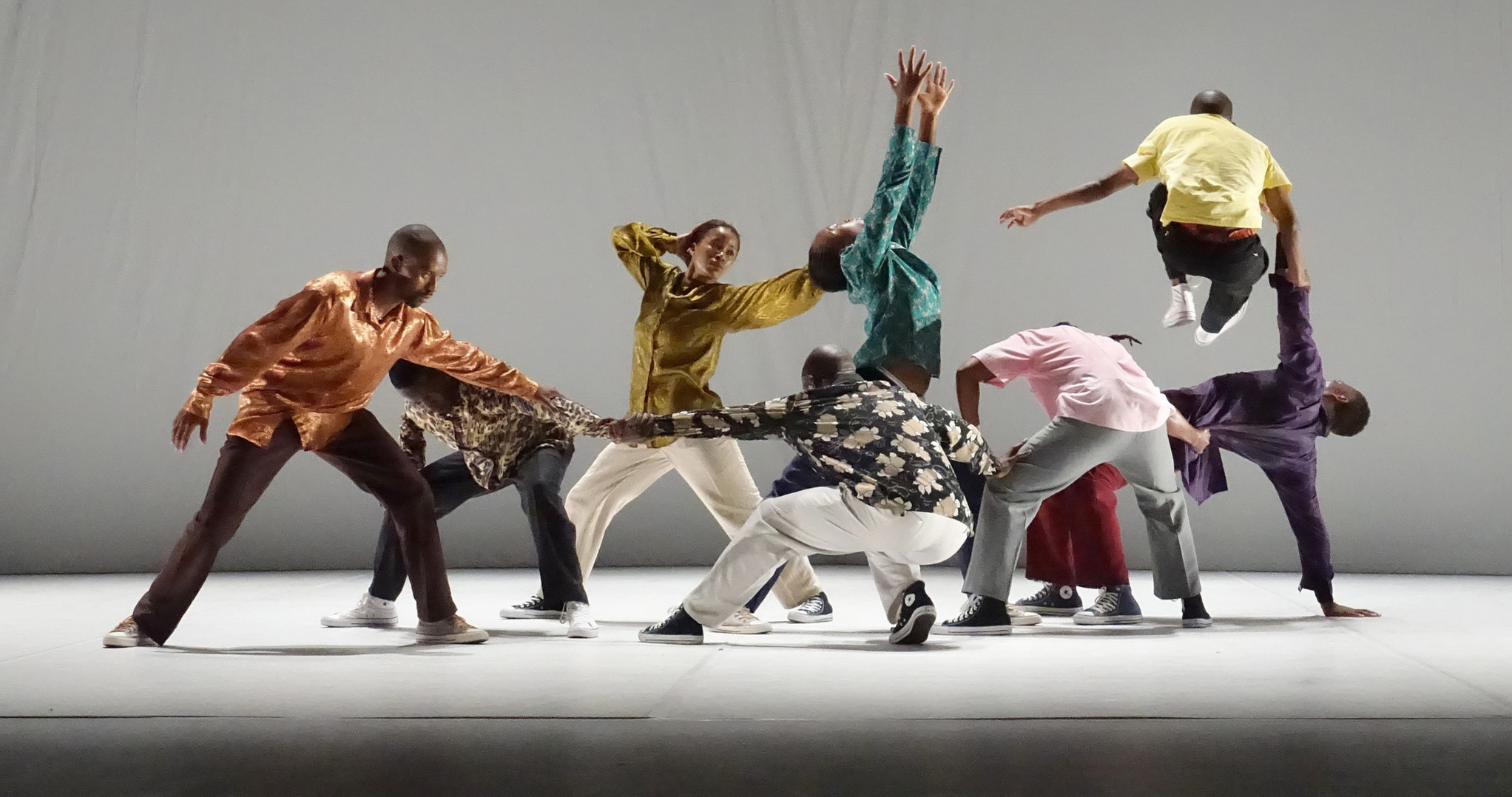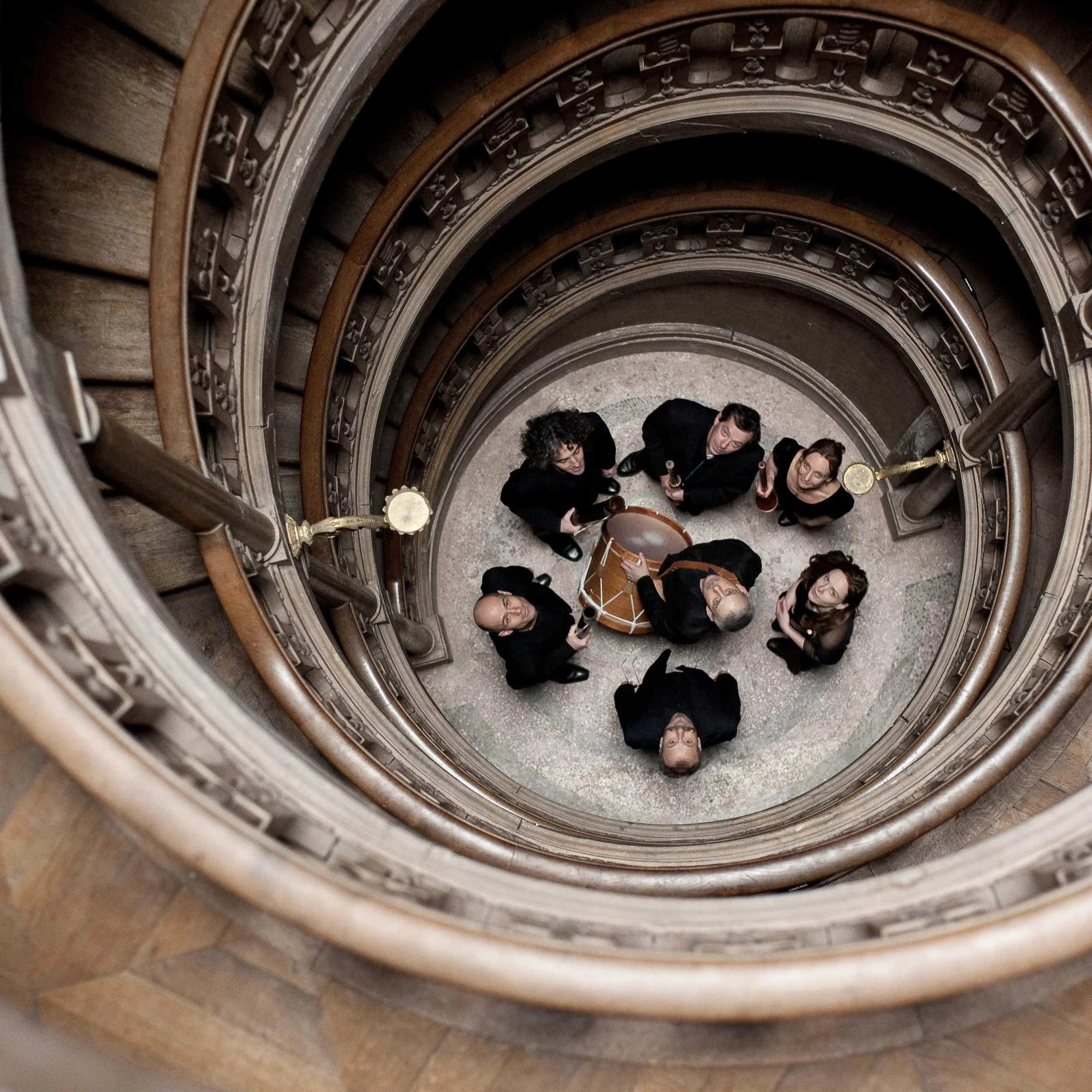South African choreographer Gregory Maqoma rails against corruption in Via Kanana
Performed by Via Katlehong, the high-energy ensemble piece features pantsula, a dance form that grew out of apartheid into a cultural movement
Via Kanana by Via Katlehong/Gregory Maqoma. Photo by Christian Ganet
DanceHouse, in partnership with Digidance, presents Via Kanana performed by Via Katlehong and choreographed by Gregory Maqoma from February 16 to March 6 via video on demand as part of Black History Month. The broadcast includes a 20-minute pre-show documentary.
THE DAY THAT Stir connects with Johannesburg-based choreographer Gregory Maqoma for a Zoom interview, South African President Cyril Ramaphosa has just received part of a report on alleged state corruption during Jacob Zuma's 2009 to 2018 presidency. A special commission established before the forced resignation of the scandal-plagued former leader focused its findings on internal looting at two state-owned companies, one of which operates the country’s ports, railways, and pipelines. The news only has only made choreographer Gregory Maqoma’s Via Kanana—a powerful ensemble piece for South African dance company Via Katlehong about to have its North American streaming premiere—all the more timely and resonant, in the most disheartening of ways.
Via Katlehong was founded in 1992 as apartheid was unravelling in its namesake township, which was a notorious war zone during the 1980s uprisings. Maqoma created Via Kanana four years ago, the work taking its name from a Sotho expression meaning “the promised land that never arrives”. Born out of widespread frustration over persistent and dreadful circumstances facing Black people in South Africa, it explores how little has changed for the better since the end of apartheid and the formation of a democratic government in 1994.
“We as a country are 28 years this year into our democracy, and what democracy meant for a lot of people was freedom—not only freedom from the apartheid government, but also freedom that was emancipating people from the harsh reality of poverty; the harsh reality of not having land; the harsh reality of not owning anything including cattle, when land and cattle were the currency of our ancestors,” Maqoma says. “Every traditional household had pride in knowing that they can provide for their family, and without those, your pride is taken away, and your ability to provide for your family diminishes. That is the reality that we’re still facing, even in our democracy.
“We are still landless: 90 percent of the land is owned by the white capitalists,” says Maqoma, who is also fluent in Zulu, Afrikaans, Xhosa, and Sotho. “Only 10 percent is shared between the majority of the people. And within our democracy, hope was given to the ruling party, which is the African National Congress—hope that a lot of things will be made right. Just today our president released the findings from the commission regarding looting, showing unforgivable ways of people taking, taking, and taking from the taxpayers and greedily taking for themselves. It’s shocking in terms of the people who are implicated in that, including the people we even placed a little bit of hope in. It’s shocking. It’s like we no longer have a system that is for the people, that is serving the people. That is the reality.”
Gregory Maqoma.
Via Kanana, the artist says, was created on the very notion that democracy presented people—falsely—with the premise of a promised land, “the land of milk and honey”. “What we’re seeing is extreme poverty, increased measures of poverty,” he says. “It’s like a virus that has infiltrated the system to an extent that it’s irrecoverable. Via Kanana speaks about that broken system, the virus that has infiltrated it.…There are schools that could be built, houses that could be built, hospitals that could be built, basic needs that could be provided for. But the money continues to disappear.”
To make Via Kanana, Maqoma travelled daily to the township of Katlehong, about a 30-minute drive east of his Johannesburg home. Led by Vusi Mdoyi, Steven Faleni, and Buru Mohlabane, Via Katlehong consists of a community school of dance and an 18-member professional company. The award-winning organization’s studio is in a tiny hall that’s also home to a craft centre, tombstone maker, and other spaces. While Maqoma acknowledges that he is one of the privileged few to be regarded as Black middle class, with an apartment and a car, he is no stranger to life in a township; he was born and raised in Soweto, near a hostel that housed migrant workers from different parts of Southern Africa. On weekends, they would compete with each other in dances, traditional and highly choreographed. He was also exposed to uprisings of students and commmnity members fighting against apartheid.
He remembers smoke, so much smoke: it emanated from households, as coal was a form of fuel for heating and cooking; at the same time, government buildings were being burned in protest. Those early experiences built a sense of empathy in Maqoma, with dance being a way to escape the mounting political tensions all around him. He began his formal training in 1990 with Moving Into Dance, becoming the renowned company’s associate artistic director in 2002. He has gone on to perform and create work for international dance companies as well as for film, fashion, and other disciplines; the founder of Vuyani Dance Theatre also teaches and has collaborated with jazz festivals and orchestras. Among his current projects is a new piece for Ballet Black in London.
“Empathy comes through because a lot of what I grew up observing has not really changed,” Maqoma says. “I feel very strongly that part of my duty, part of my responsibility, as an artist is to hold the mirror to society and to reflect truthfully on my own experience but also the reality that I’m facing presently.
“What was critical for me was to see and observe on my way to the studio, to observe people and see the situation and be surrounded by the circumstances, the reality people live with,” he says. “During lunch break, I would take a walk in the township; you’re immersed in a rollercoaster of emotions. You see something that makes you really love your gut out, and the next moment there’s a body lying there covered in newspapers. The next moment you see a child and mother begging in the street. The emotions you go through observing different kinds of conditions—the squatter camps, the squalor… People live in that squalor. Then the next moment there’s a young man who’s busking and dancing, and it brings a smile to your face.”
Going back decades, townships were not only places of political and civic unrest but also of extraordinary creativity. They are the birthplace of pantsula—the form performed by the migrant workers Maqoma witnessed every weekend during his youth. Encompassing fashion and music as well as dance, it’s a style, language, lifestyle, and culture that emerged in the 1950s and ’60s amid the forced displacement of Black populations by the newly elected apartheid government.
“Pantsula is a cultural form, a cultural movement, which is performed mainly by young people in the townships who have found a form of expression for themselves in creating their own identity, in reclaiming their position in society, a society that never looked after them,” Maqoma explains. “It’s kind of a rebellious form, rebelling against a system that has never worked for them. With dance, the best routine is also tackling very deep social issues. I’m using the energy of that dance as a form of urgency, of how quickly the country is going into the pits.”
The choreography in Via Kanana is highly energetic and rhythmic, infused with gumboot, tap, hip hop, hand clapping, whistling, and more. It’s set to an original score that incorporates text by Patrick Lumumba, the first prime minister of the newly independent Democratic Republic of the Congo, spoken by one of the eight dancers.
Via Kanana explores corruption that exists in and beyond South Africa, Maqoma explains; in tandem with the Black Lives Matter movement, it speaks to common Black experience.
“This work is not just about the plight of South Africa, but it’s really challenging the circumstances of which a Black person is subject to,” Maqoma says. “We’re continuing to live at the edge. This piece is really about life and death.”
Via Kanana by Via Katlehong/Gregory Maqoma. Photo by Christian Ganet.
And yet despite so much trouble and injustice, there is hope for the future, Maqoma says. “We still have young people who are usually determined to overcome,” he says. “Working in the group [of dancers] I saw the will and determination to overcome their own circumstances. They wanted to make the work to make a statement, but also they knew what it meant for their families, for their parents and what it will mean for their future. They knew this was a job that they needed to secure, because it’s a job that’s going to change their own circumstances, that’s going to put a meal on their table, that’s going to take their siblings to school, that’s going to buy medicine for an ailing grandmother or grandfather. They took it seriously, and that gives me hope, people who are hungry to succeed at something, who are holding on to their gift and using that positively to send out messages and using that as well to change their own disadvantages–using all of that disadvantage and packaging it into an advantage.”
For more information, visit dancehouse.ca.
















